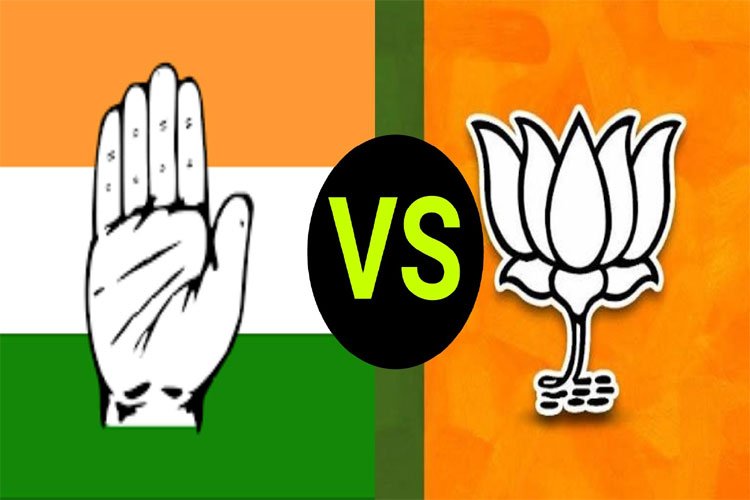Rajasthan Elections 2023: BJP’s Strategic Silence vs Congress’ Uphill Battle


As the political landscape of Rajasthan braces for the imminent Assembly elections scheduled for later this year, both the Congress and the BJP find themselves in a strategic face-off that could reshape the state’s political trajectory. The Bharatiya Janata Party (BJP), armed with a new playbook, is meticulously positioning itself as a formidable contender, challenging the incumbent Congress party’s standing.
This time around, the BJP’s approach to the electoral battle is starkly distinct from their previous campaigns. Unlike their customary practice of projecting a chief ministerial face, the BJP has opted for a novel experiment, keeping the identity of their potential leader under wraps. This strategic ambiguity, a departure from tradition, has ignited intrigue and speculation among voters and political analysts alike.
Historically, the BJP has always put forth a prominent figure as its potential Chief Ministerial candidate to rally voter support. However, the 2023 Assembly elections in Rajasthan mark a departure from this norm. Instead of endorsing a specific individual, the BJP has chosen to maintain an air of mystery, leaving its supporters and rivals alike speculating about the party’s ultimate selection.
This unorthodox strategy is not unique to Rajasthan; the BJP previously deployed a similar tactic in the Delhi Assembly elections. On that occasion, central leaders, Union ministers, and Chief Ministers from BJP-governed states were at the forefront of the campaign, resulting in a remarkable electoral performance. This blueprint seems to be part of the BJP’s regional playbook, extending beyond Rajasthan’s borders.
Reports from party insiders suggest that the BJP has tapped into its experienced cadre from Haryana, Gujarat, Uttar Pradesh, Himachal Pradesh, and Uttarakhand, entrusting them with the responsibility of assessing each of Rajasthan’s 200 constituencies. These leaders are assigned the task of gauging local sentiments, identifying pertinent issues, and compiling comprehensive reports to inform the central leadership’s strategic decisions. Their purview extends beyond political analysis, encompassing the prevailing conditions, potential candidates, grassroots party activities, internal factionalism, opposition dynamics, and the resonance of central government policies.
Intriguingly, this new approach signifies a departure from the BJP’s traditional campaign strategies. Previous elections often saw the party projecting Prime Minister Narendra Modi’s persona as a key campaign asset. However, the 2023 elections in Rajasthan mark a shift, indicating that the BJP intends to actively involve PM Modi in the electioneering process.
Adding an extra layer of intrigue is the party’s recent decision to deploy its top leaders across different states. Prime Minister Modi, Home Minister Amit Shah, National President JP Nadda, and National Organizing Secretary BL Santosh have all been entrusted with spearheading campaigns in Rajasthan, Madhya Pradesh, Chhattisgarh, and Telangana, respectively. This distribution of responsibilities underlines the BJP’s concerted efforts to secure victories across the region.
The dynamics in Rajasthan have shifted, with the BJP positioning itself as a potent alternative, highlighting perceived policy failures and corruption concerns within the Congress-run states. The Congress, grappling with allegations of corruption and governance missteps, faces an uphill battle to maintain its credibility among the electorate.
With the clock ticking down to the Assembly elections, Rajasthan finds itself at a pivotal juncture. The BJP’s strategic shift, coupled with the direct involvement of its national leaders, sets the stage for a gripping political showdown. As the Congress strives to counter the BJP’s innovative approach, the forthcoming months will reveal whether the incumbent party can regain its footing, or if the BJP’s calculated gambit will secure it another term at the helm of Rajasthan’s political landscape.
DISCLAIMER: The author is solely responsible for the views expressed in this article. The author carries the responsibility for citing and/or licensing of images utilized within the text.
